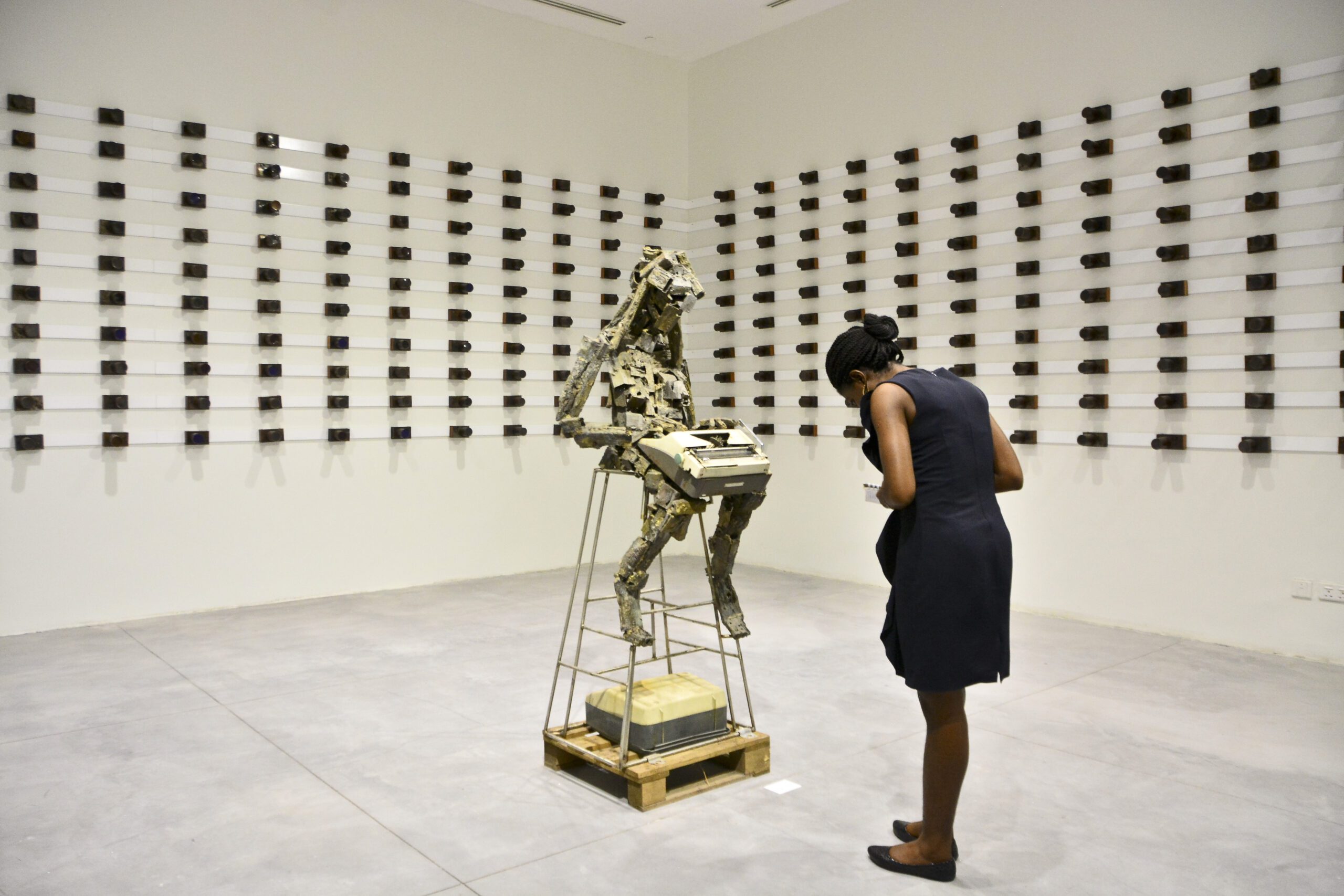Cultural coverage in Nigeria is presently limited, writes Obidike Okafor, and that corresponds with scarce training and income opportunities for such work.

Critical Writing Workshop Lagos, 2015. Photo: Aderimi Adgebite
Nigeria’s arts and culture journalists navigate a difficult path, despite working in a nation brimming with vibrant traditions, many types of artistic brilliance, and a rich cultural tapestry. Due to underinvestment, a shortage of training opportunities, and general indifference from sponsors and media outlets, these storytellers, however passionate, face numerous challenges in their quest to illuminate the myriad facets of Nigeria’s cultural landscape.
“My candid view is that there is not enough capacity training for culture journalists in this part of the world,” writer and journalist Olayinka Oyegbile, a respected figure in the field, laments. “Corporate organizations don’t think it is important.” Proposals for training in this specialized field often receive the same response: “We don’t have budgets for such.” This lack of financial and institutional backing leaves arts and culture journalists striving to enhance their craft with limited resources.
Compounding the issue is media outlets’ waning commitment to providing comprehensive arts and culture coverage. In the 1980s and 1990s, newspapers such as the Guardian boasted daily arts pages that celebrated various forms of artistic expression. Fridays saw a bonanza of content featuring in-depth explorations of all cultural sectors. “How many newspapers do that now?” Oyegbile observes. “Not even the Guardian. Doesn’t that tell you something?” This decline in dedicated arts coverage shows media outlets increasingly deprioritizing it.
Arts and culture editor Olayinka Olatunbosun argues that “arts and culture journalists are the most blindsided professionals in print journalism/newsrooms today.” When opportunities for training arise, journalists covering business receive the nod, leaving their arts and culture counterparts on the periphery. This imbalance reflects a broader issue of editors and media organizations not viewing arts and culture as crucial or lucrative subjects.
“The digital age has made it necessary for art writers to reskill,” Olatunbosun continues, “but we see today that most newsrooms are governed by editors who lack appreciation or understanding for arts.” The problem seems to primarily lie with a need for more training opportunities and support from sponsors, media outlets, and academic institutions.
“Art reporting is one of the technical beats most journalists don’t like to cover,” Obinna Emelike says. Lack of enthusiasm for this specialization is exacerbated by the failure of industry stakeholders to invest in improving journalists’ writing skills. “In terms of sponsorship, art gets the least support from corporate bodies,” Emelike notes. “The few sponsorships, like those from NLNG and GTBank, are highly anticipated.” This funding scarcity impedes the growth and recognition of arts and culture journalism in Nigeria.
In the grand media scheme, arts and culture journalism often remains on the fringes. As Emelike points out, “Of course, art has never been a hot category for the media and organizers of awards.” What is needed is a shift in perspective, more significant investment in arts and culture journalism, and recognition of its value within Nigeria’s ever-evolving narrative.
Art institutions such as museums, galleries, non-profit organizations, and academia play a crucial role in supporting art journalism by providing access to information, resources, and artists. For example, the Centre for Heritage Development in Africa (CHDA) offers a diploma program in museum journalism that covers topics such as art history, museum journalism, and critical writing. The program also includes internships at museums and other art institutions.
The Ecole du Patrimoine Africain (EPA) also offers a certificate program that covers topics such as art history, museum journalism, and critical writing, and includes internships at museums and other art institutions. In Nigeria specifically, the Yemisi Shyllon Museum of Art at the Pan-Atlantic University offers a variety of training and capacity-building programs for museum professionals, a category which in this case includes arts journalists. For example, the museum offers a workshop on art criticism that aims to enable participants to develop a critical vocabulary, analyze artworks, and write art reviews.
In a nation where the voices of artists and cultural workers are often marginalized, arts and culture journalists play a vital role in amplifying these voices and championing people’s artistic achievements. Yet as storytellers they face numerous challenges, including underinvestment, a lack of training, and general indifference from media outlets and potential funders. To ensure that Nigeria’s cultural heritage is preserved and celebrated for future generations, but also to make the most of what is happening now, the nation must acknowledge the pivotal role that arts and culture journalists play.
Based in Lagos, Obidike Okafor is a content consultant, freelance art journalist, and documentary filmmaker.
More Editorial